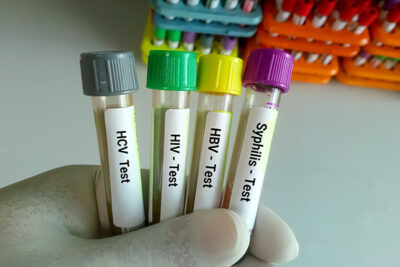
Doxycycline Demonstrates Protection Against Sexually Transmitted Infections
By Jonathan Springston, Editor, Relias Media
A group of researchers have found men who have sex with men (MSM) and transgender women who took doxycycline within 72 hours of engaging in condomless sex were less likely to test positive for syphilis, gonorrhea, or chlamydia.
Investigators from San Francisco and Seattle performed an open-label, randomized study into which they recruited MSM and transgender women who were taking preexposure prophylaxis (PrEP) against HIV infection (the PrEP cohort) or who were living with HIV infection (the persons living with HIV infection, or PLWH, cohort). Participants had tested positive for gonorrhea, chlamydia, or syphilis in the past year.
Among 501 adults enrolled at four centers, 327 participants were taking HIV PrEP medications and 174 were PLWH. Subjects were randomly assigned to take the broad-spectrum antibiotic doxycycline post-exposure (doxy-PEP) or to standard care. Patients in the doxy-PEP group were told to take 200 mg doxycycline 24-72 hours after condomless sex.
Researchers checked in with participants every three months to determine treatment adherence, to monitor for side effects, and to test for sexually transmitted infections (STIs). A data and safety monitoring board checked in on this work every six months.
The authors diagnosed one or more STIs in 10.7% of quarterly clinic visits in the doxy-PEP group vs. 31.9% of visits in the standard care group. Among patients living with HIV, researchers detected one or more STIs in 11.8% of quarterly visits in the doxy-PEP group vs. 30.5% in the standard care group. Almost all (86.2%) of patients in the doxy-PEP group reported they took their treatment consistently within 72 hours, as instructed. Almost three-quarters (71.3%) reported they never missed a dose.
However, investigators did raise some concerns about patients possibly developing antimicrobial resistance. For example, there was such resistance in more incident gonorrhea strains among doxy-PEP participants vs. standard care participants (38.5% vs. 12.5%). The authors suggested doxy-PEP could offer less protection against gonorrhea strains that already are resistant. Also, the researchers noted doxy-PEP patients who still tested positive for Staphylococcus aureus after 12 months demonstrated some doxycycline resistance (16% vs. 8% of standard care participants).
“Given its demonstrated efficacy in several trials, doxy-PEP should be considered as part of a sexual health package for [MSM] and transwomen if they have an increased risk of STIs,” said Annie Luetkemeyer, MD, professor of infectious diseases at Zuckerberg San Francisco General Hospital and co-principal investigator. “It will be important to monitor the impact of doxy-PEP on antimicrobial resistance patterns over time and weigh this against the demonstrated benefit of reduced STIs and associated decreased antibiotic use for STI treatment in men at elevated risk for recurrent STIs.”
Meanwhile, the CDC said this week the number of cases of chlamydia, gonorrhea, and syphilis all increased from 2020 to 2021, reaching 2.5 million reported cases. Data indicate gay and bisexual men were one of the groups more likely to be affected. Overall, syphilis cases increased 32% year over year.
“The U.S. STI epidemic shows no signs of slowing. The reasons for the ongoing increases are multifaceted — and so are the solutions,” said Leandro Mena, MD, MPH, director of the CDC’s division of STD prevention. “For the first time in decades, we’re seeing promising new STI interventions on the horizon, but these alone will not solve this epidemic. It will take many of us working together to effectively use new and existing tools, to increase access to quality sexual healthcare services for more people, and to encourage ongoing innovation and prioritization of STI prevention and treatment in this country.”
For more on this and related subjects, be sure to read the latest issues Contraceptive Technology Update, Hospital Infection Control & Prevention, and Infectious Disease Alert.
